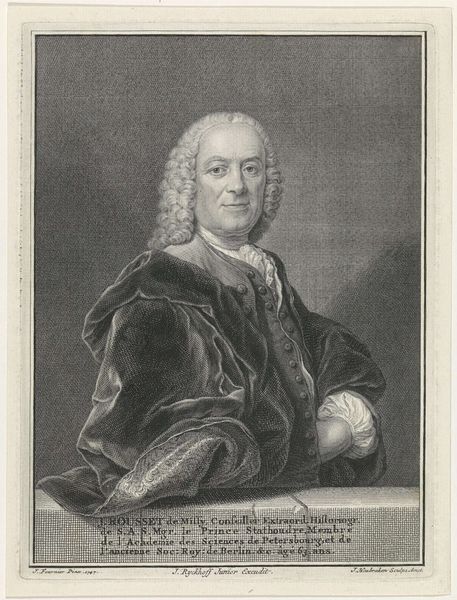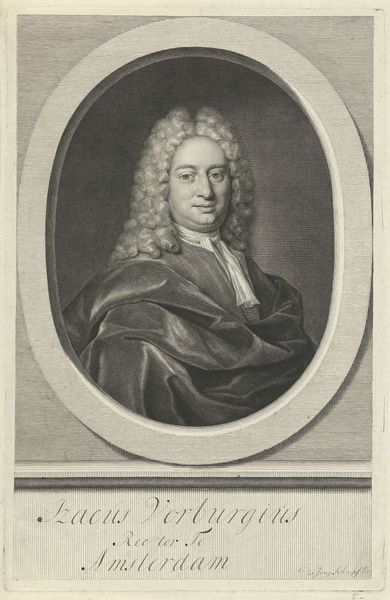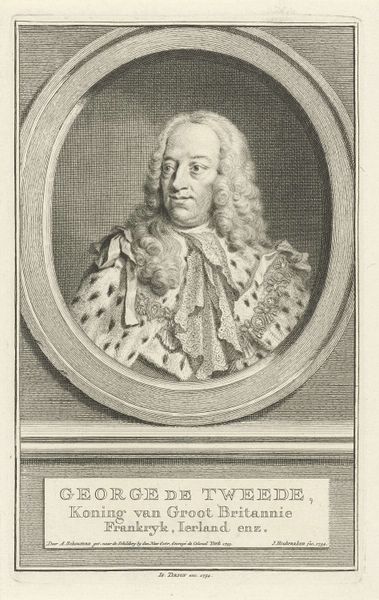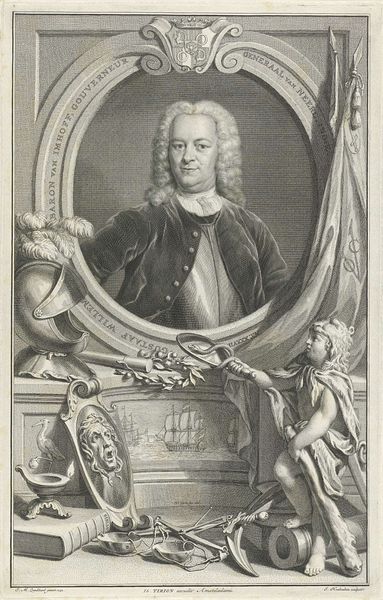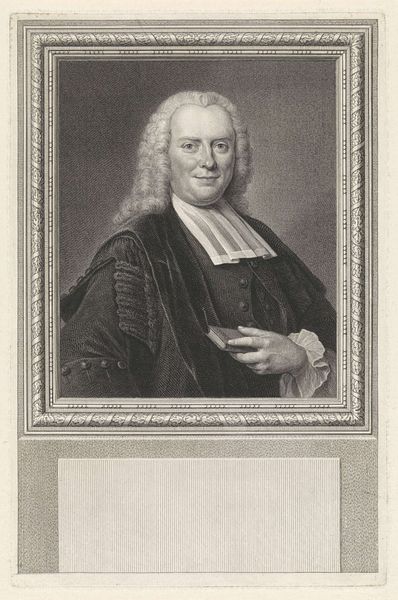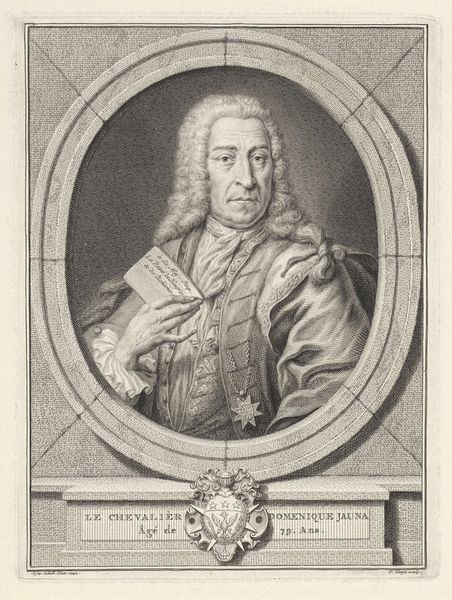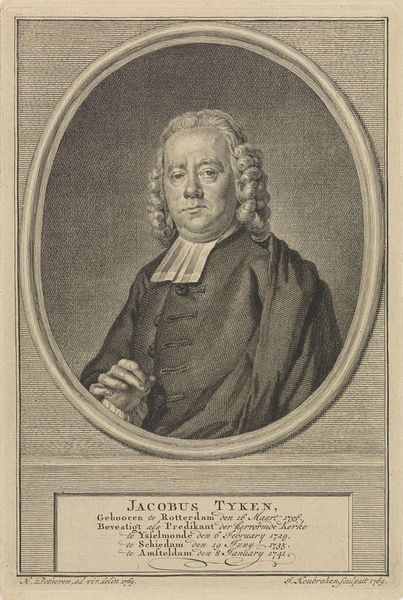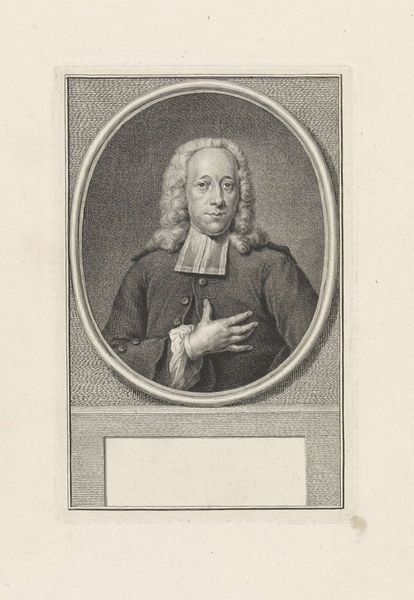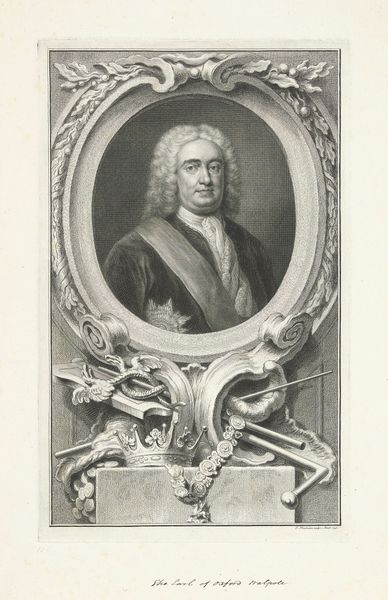
Dimensions: height 362 mm, width 232 mm
Copyright: Rijks Museum: Open Domain
Editor: This is "Portret van Samuel Radermacher," an engraving made by Jacob Houbraken in 1766, on paper. I'm immediately struck by the contrast between the elaborate frame and the subject’s composed, almost serious, demeanor. What can you tell me about this portrait? Curator: Well, considering it's an engraving, we should really be thinking about the process. The lines, the cross-hatching – it's all about transferring an image through labor. Think about the artist, Houbraken, and his tools. He's mediating Samuel Radermacher's image for mass consumption, of a sort. This wasn't photography, but it served a similar purpose. What does the very act of engraving communicate about power and access during this time? Editor: That’s interesting! So, instead of just seeing it as a portrait of a man, we should think about the layers of production that made it possible? Does the material – paper – play into this at all? Curator: Absolutely. Paper was a valuable commodity then. Its texture, its durability... the quality would have communicated something about the sitter and the patron of this work. Notice the crispness of the lines. How does the engraver's skill highlight Radermacher's status, both economically and politically? Consider also the depicted book - what could this object signal, material and content wise, about its possessor? Editor: So, the materials and the labor become part of the message? It’s not just about Samuel Radermacher; it’s about how his image was carefully crafted and distributed through this meticulous process. It gives a new level of appreciation to engravings that I had never considered. Curator: Precisely. It encourages us to examine not just the 'what' but the 'how' and the 'why' of art's production and circulation in society. It all has inherent and ideological value in how we perceive this subject.
Comments
No comments
Be the first to comment and join the conversation on the ultimate creative platform.
